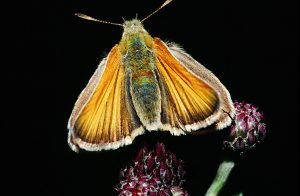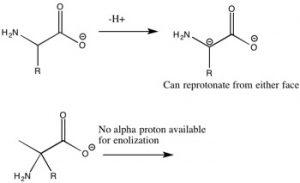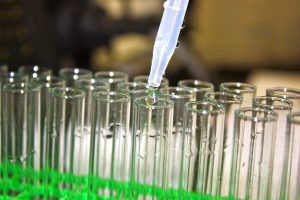The temperature outside is quickly dropping and winter is soon approaching. As humans we can bundle up to stay warm or turn the heat up in our homes however some insects such as butterflies don’t have that same luxury. As butterflies are poikilothermic organisms which means they cannot regulate their body temperature and depend on external factors for their body temperature to change. However, climate change is currently playing a key role for the lives of butterflies.
A study done from 1976-1990 by various researchers found that there was a relationship between the weather and population fluctuation in British butterflies. The also found that 28 out of the 31 species studied had trends that were associated with the fluctuating temperatures and rainfall. The warm weather, especially in June, was the best for the butterflies.

Thymelicus sylvestris. One of the butterfly species that were researched. Source: Wikimedia Commons
The research began with 34 plots to study the butterflies in 1976 which then increased to over 10 sites from 1979. The Central England Temperature (CET) data was used to analyze the trend of the butterflies. Different analytical methods were used to analyze the data and future abundance predations were also made.
I find this research to be very important for now and the future as it tells us that climate change is having a big effect on the lives of current living things, such as the butterflies in this research. I believe decreasing greenhouse gasses and the emission of CO2 gas can significantly help organisms and insects using their body for normal functions. In the case of the butterflies, they are accurately using external temperatures to regulate their body.

Greenhouse Gasses. Source: Wikimedia Commons
-Harjot Gill




